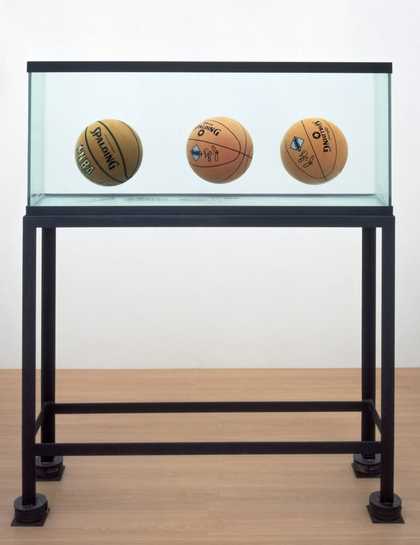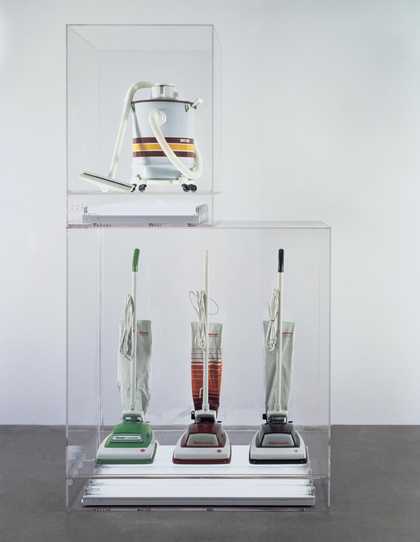
Jeff Koons
Three Ball Total Equilibrium Tank (Two Dr J Silver Series, Spalding NBA Tip-Off) (1985)
Tate

Jeff Koons
New Hoover Convertibles, Green, Red, Brown, New Shelton Wet/Dry 10 Gallon Displaced Doubledecker (1981–7)
ARTIST ROOMS Tate and National Galleries of Scotland
Neo-geo is short for neo-geometric conceptualism. It is applied to the work of Peter Halley, Ashley Bickerton, Jeff Koons and others. Their work was influenced by the style of earlier developments in twentieth century art – such as minimalism, pop art and op art – but they used this language to criticize what Halley referred to as the ‘geometricisation of modern life’. Halley in particular was strongly influenced by the French thinker Jean Baudrillard.
Seeing geometry as a metaphor for society, Halley made brilliantly coloured geometrically abstract paintings which, however, have a figurative basis. They are derived from things such as circuit boards, which Halley uses to represent the individual organisms and networks of contemporary urban existence. The paintings are depictions of the social landscape, of isolation and connectivity.
The work of Bickerton and Koons was mainly three dimensional. Koons parodied consumer culture by presenting real consumer goods as works of timeless beauty. Bickerton in works such as his Biofragment series, created a vision of apocalypse.
